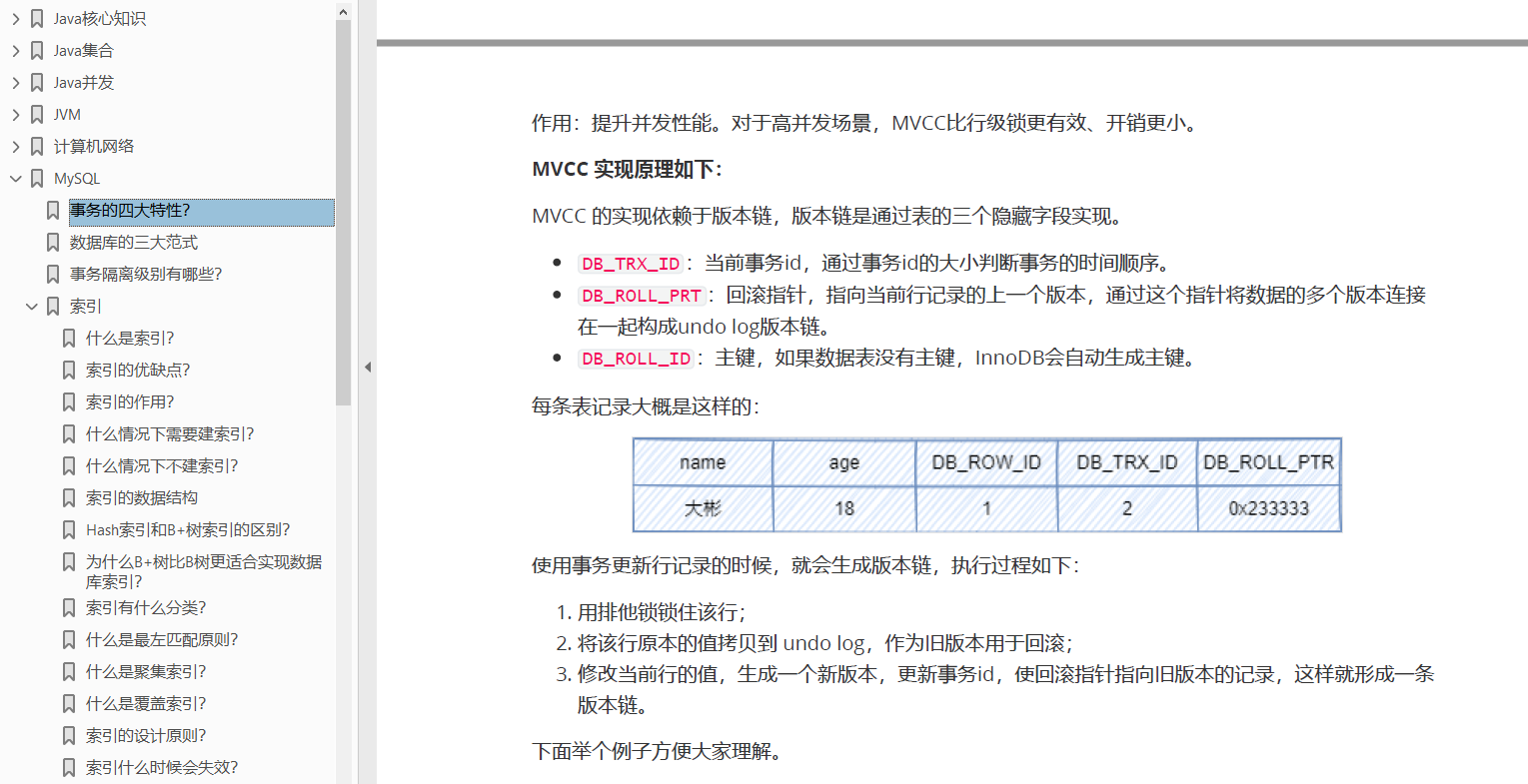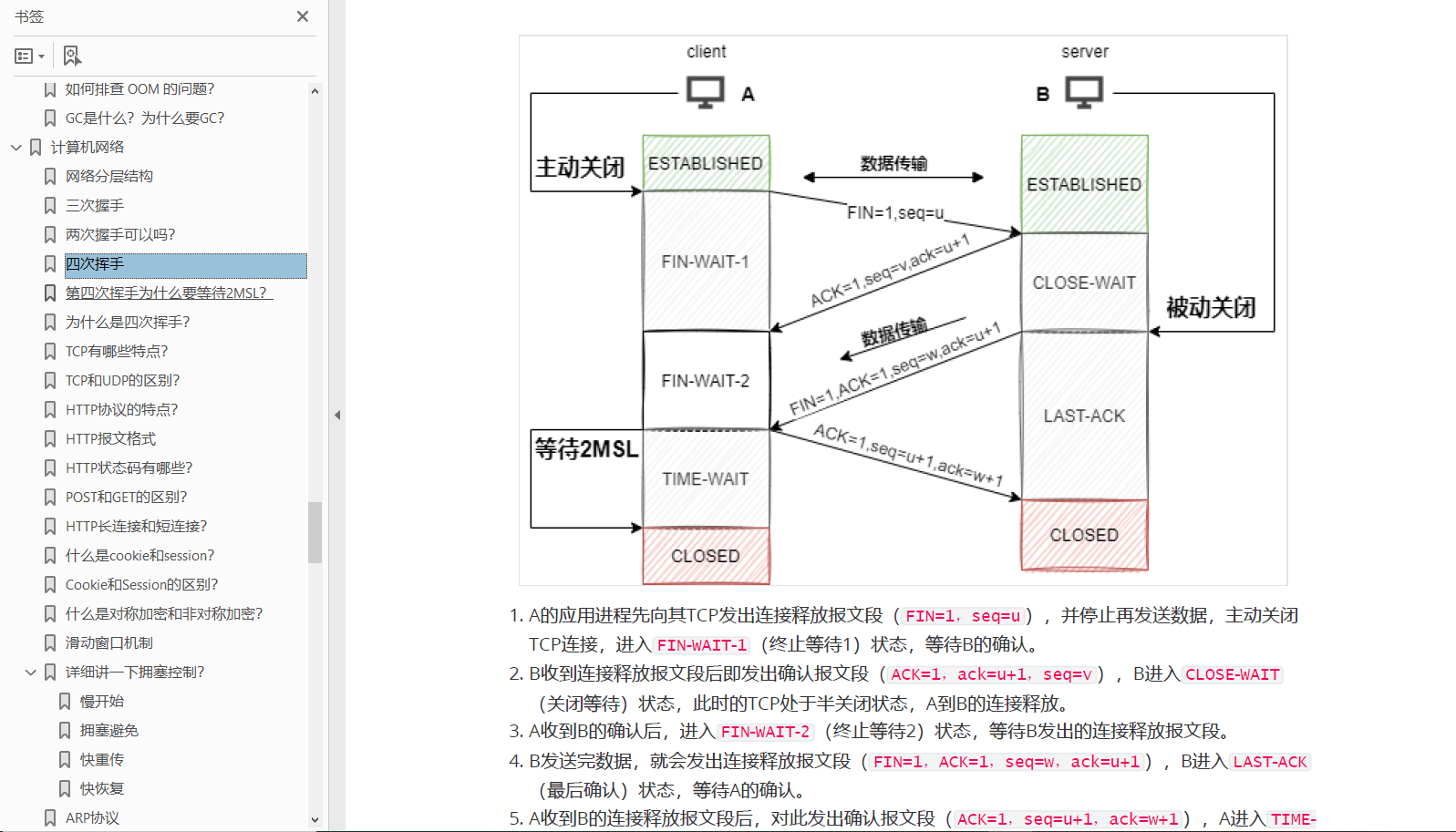Spring源码分析
什么是循环依赖
循环依赖其实就是循环引用,也就是两个或则两个以上的bean互相持有对方,最终形成闭环。比如A依赖于B,B依赖于C,C又依赖于A。如下图所示:

注意,这里不是函数的循环调用,是对象的相互依赖关系。循环调用其实就是一个死循环,除非有终结条件。
Spring中循环依赖场景有:
(1)构造器的循环依赖
(2)field属性的循环依赖。
对于构造器的循环依赖,Spring 是无法解决的,只能抛出 BeanCurrentlyInCreationException 异常表示循环依赖,所以下面我们分析的都是基于 field 属性的循环依赖。
Spring 只解决 scope 为 singleton 的循环依赖,对于scope 为 prototype 的 bean Spring 无法解决,直接抛出 BeanCurrentlyInCreationException 异常。
如何检测循环依赖
检测循环依赖相对比较容易,Bean在创建的时候可以给该Bean打标,如果递归调用回来发现正在创建中的话,即说明了循环依赖了。
解决循环依赖
我们先从加载 bean 最初始的方法 doGetBean() 开始。
在 doGetBean() 中,首先会根据 beanName 从单例 bean 缓存中获取,如果不为空则直接返回。
protected Object getSingleton(String beanName, boolean allowEarlyReference) {
Object singletonObject = this.singletonObjects.get(beanName);
if (singletonObject == null && isSingletonCurrentlyInCreation(beanName)) {
synchronized (this.singletonObjects) {
singletonObject = this.earlySingletonObjects.get(beanName);
if (singletonObject == null && allowEarlyReference) {
ObjectFactory<?> singletonFactory = this.singletonFactories.get(beanName);
if (singletonFactory != null) {
singletonObject = singletonFactory.getObject();
this.earlySingletonObjects.put(beanName, singletonObject);
this.singletonFactories.remove(beanName);
}
}
}
}
return singletonObject;
}
这个方法主要是从三个缓存中获取,分别是:singletonObjects、earlySingletonObjects、singletonFactories,三者定义如下:
private final Map<String, Object> singletonObjects = new ConcurrentHashMap<>(256);
private final Map<String, ObjectFactory<?>> singletonFactories = new HashMap<>(16);
private final Map<String, Object> earlySingletonObjects = new HashMap<>(16);
分享一份大彬精心整理的大厂面试手册,包含计算机基础、Java基础、多线程、JVM、数据库、Redis、Spring、Mybatis、SpringMVC、SpringBoot、分布式、微服务、设计模式、架构、校招社招分享等高频面试题,非常实用,有小伙伴靠着这份手册拿过字节offer~
需要的小伙伴可以自行下载:
这三级缓存分别指:
(1)singletonFactories : 单例对象工厂的cache
(2)earlySingletonObjects :提前暴光的单例对象的Cache
(3)singletonObjects:单例对象的cache
他们就是 Spring 解决 singleton bean 的关键因素所在,我称他们为三级缓存,第一级为 singletonObjects,第二级为 earlySingletonObjects,第三级为 singletonFactories。这里我们可以通过 getSingleton() 看到他们是如何配合的,这分析该方法之前,提下其中的 isSingletonCurrentlyInCreation() 和 allowEarlyReference。
isSingletonCurrentlyInCreation():判断当前 singleton bean 是否处于创建中。bean 处于创建中也就是说 bean 在初始化但是没有完成初始化,有一个这样的过程其实和 Spring 解决 bean 循环依赖的理念相辅相成,因为 Spring 解决 singleton bean 的核心就在于提前曝光 bean。- allowEarlyReference:从字面意思上面理解就是允许提前拿到引用。其实真正的意思是是否允许从 singletonFactories 缓存中通过
getObject()拿到对象,为什么会有这样一个字段呢?原因就在于 singletonFactories 才是 Spring 解决 singleton bean 的诀窍所在,这个我们后续分析。
getSingleton() 整个过程如下:首先从一级缓存 singletonObjects 获取,如果没有且当前指定的 beanName 正在创建,就再从二级缓存中 earlySingletonObjects 获取,如果还是没有获取到且运行 singletonFactories 通过 getObject() 获取,则从三级缓存 singletonFactories 获取,如果获取到则,通过其 getObject() 获取对象,并将其加入到二级缓存 earlySingletonObjects 中 从三级缓存 singletonFactories 删除,如下:
singletonObject = singletonFactory.getObject();
this.earlySingletonObjects.put(beanName, singletonObject);
this.singletonFactories.remove(beanName);
这样就从三级缓存升级到二级缓存了。
上面是从缓存中获取,但是缓存中的数据从哪里添加进来的呢?一直往下跟会发现在 doCreateBean() ( AbstractAutowireCapableBeanFactory ) 中,有这么一段代码:
boolean earlySingletonExposure = (mbd.isSingleton() && this.allowCircularReferences && isSingletonCurrentlyInCreation(beanName));
if (earlySingletonExposure) {
if (logger.isDebugEnabled()) {
logger.debug("Eagerly caching bean '" + beanName +
"' to allow for resolving potential circular references");
}
addSingletonFactory(beanName, () -> getEarlyBeanReference(beanName, mbd, bean));
}
也就是我们上一篇文章中讲的最后一部分,提前将创建好但还未进行属性赋值的的Bean放入缓存中。
如果 earlySingletonExposure == true 的话,则调用 addSingletonFactory() 将他们添加到缓存中,但是一个 bean 要具备如下条件才会添加至缓存中:
- 单例
- 运行提前暴露 bean
- 当前 bean 正在创建中
addSingletonFactory() 代码如下:
protected void addSingletonFactory(String beanName, ObjectFactory<?> singletonFactory) {
Assert.notNull(singletonFactory, "Singleton factory must not be null");
synchronized (this.singletonObjects) {
if (!this.singletonObjects.containsKey(beanName)) {
this.singletonFactories.put(beanName, singletonFactory);
this.earlySingletonObjects.remove(beanName);
this.registeredSingletons.add(beanName);
}
}
}
从这段代码我们可以看出 singletonFactories 这个三级缓存才是解决 Spring Bean 循环依赖的诀窍所在。同时这段代码发生在 createBeanInstance() 方法之后,也就是说这个 bean 其实已经被创建出来了,但是它还不是很完美(没有进行属性填充和初始化),但是对于其他依赖它的对象而言已经足够了(可以根据对象引用定位到堆中对象),能够被认出来了,所以 Spring 在这个时候选择将该对象提前曝光出来让大家认识认识。
介绍到这里我们发现三级缓存 singletonFactories 和 二级缓存 earlySingletonObjects 中的值都有出处了,那一级缓存在哪里设置的呢?在类 DefaultSingletonBeanRegistry 中可以发现这个 addSingleton() 方法,源码如下:
protected void addSingleton(String beanName, Object singletonObject) {
synchronized (this.singletonObjects) {
this.singletonObjects.put(beanName, singletonObject);
this.singletonFactories.remove(beanName);
this.earlySingletonObjects.remove(beanName);
this.registeredSingletons.add(beanName);
}
}
添加至一级缓存,同时从二级、三级缓存中删除。这个方法在我们创建 bean 的链路中有哪个地方引用呢?其实在前面博客已经提到过了,在 doGetBean() 处理不同 scope 时,如果是 singleton,则调用 getSingleton(),如下:
if (mbd.isSingleton()) {
sharedInstance = getSingleton(beanName, () -> {
try {
return createBean(beanName, mbd, args);
}
catch (BeansException ex) {
// Explicitly remove instance from singleton cache: It might have been put there
// eagerly by the creation process, to allow for circular reference resolution.
// Also remove any beans that received a temporary reference to the bean.
destroySingleton(beanName);
throw ex;
}
});
bean = getObjectForBeanInstance(sharedInstance, name, beanName, mbd);
}
public Object getSingleton(String beanName, ObjectFactory<?> singletonFactory) {
Assert.notNull(beanName, "Bean name must not be null");
synchronized (this.singletonObjects) {
Object singletonObject = this.singletonObjects.get(beanName);
if (singletonObject == null) {
//....
try {
singletonObject = singletonFactory.getObject();
newSingleton = true;
}
//.....
if (newSingleton) {
addSingleton(beanName, singletonObject);
}
}
return singletonObject;
}
}
至此,Spring 关于 singleton bean 循环依赖已经分析完毕了。所以我们基本上可以确定 Spring 解决循环依赖的方案了:Spring 在创建 bean 的时候并不是等它完全完成,而是在创建过程中将创建中的 bean 的 ObjectFactory 提前曝光(即加入到 singletonFactories 缓存中),这样一旦下一个 bean 创建的时候需要依赖 bean ,则直接使用 ObjectFactory 的 getObject() 获取了,也就是 getSingleton()中的代码片段了。
最后来描述下就上面那个循环依赖 Spring 解决的过程:首先 A 完成初始化第一步并将自己提前曝光出来(通过 ObjectFactory 将自己提前曝光),在初始化的时候,发现自己依赖对象 B,此时就会去尝试 get(B),这个时候发现 B 还没有被创建出来,然后 B 就走创建流程,在 B 初始化的时候,同样发现自己依赖 C,C 也没有被创建出来,这个时候 C 又开始初始化进程,但是在初始化的过程中发现自己依赖 A,于是尝试 get(A),这个时候由于 A 已经添加至缓存中(一般都是添加至三级缓存 singletonFactories ),通过 ObjectFactory 提前曝光,所以可以通过 ObjectFactory.getObject() 拿到 A 对象,C 拿到 A 对象后顺利完成初始化,然后将自己添加到一级缓存中,回到 B ,B 也可以拿到 C 对象,完成初始化,A 可以顺利拿到 B 完成初始化。到这里整个链路就已经完成了初始化过程了。

